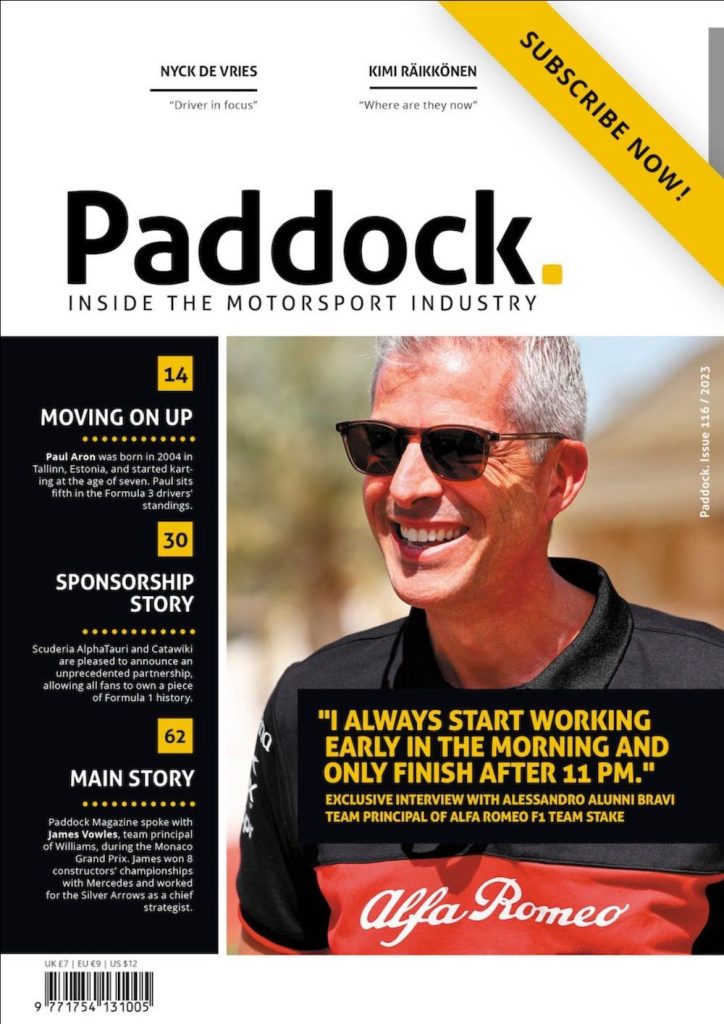Since the new millennium has started, staying in the business has become a merely impossible task for Formula 1 newcomers. The list of teams that had to be sold is long and in recent years, takeovers have even gone out of fashion.
Click here to subscribe to our print edition!
When four-time Formula 1 world champion Alain Prost took over the helm of the “French national team” in the sport at Ligier, he did certainly not imagine that his Prost Racing project would fail in 2001, after only four seasons and 83 races in the bag – especially, considering that predecessor Ligier had been successful on the grid for two decades.
Accompanied by Formula 1 supremo Bernie Ecclestone’s series expansion campaign and the subsequent budget rise, the number of teams swapping owners rocketed upwards. “Big Bernie” has pressed more and more money out of the race organisers, broadcasters and series partners, which also secured larger bonuses for the winning teams. However, this left the big guns working with budgets of USD 350 or more, while the bottom-of-the-grid teams had to operate with 20% of the financial assets. Hence, the collapse was inevitable.
The Jordan saga
From 1991 to 2001 Eddie Jordan’s team was fighting for podiums, race wins and in 1999, for the world championship title. However, after this decade of success, Jordan started to struggle financially, lose both competitive technical partners and drivers, at the end of the 2004 season he decided to call it a day. Eddie sold his fading outfit to Canadian businessman Alex Shnaider, who renamed it Midland F1. The Toyota-powered cars were battling at the wrong end of the grid and remained scoreless before Shnaider decided to stop his Formula 1 endeavours. Towards the end of the 2006 season, the team was sold to Dutch sports car makers Spyker and raced its last three Grands Prix under the official name Spyker MF1 Racing. Spyker was equally short-lived, but at least managed to score a point from Adrian Sutil’s 8th place, which he gained after Toro Rosso’s Tonio Liuzzi had received a 25-second penalty for overtaking under yellow. Mid 2007 the team was sold to a consortium named “Orange India” led by Indian businessman Vijay Mallya and Dutch entrepreneur Michiel Mol after approval by Spyker’s shareholders. Mallya attended the Chinese Grand Prix as a team owner and renamed the team Force India for the 2008 season.
In 2005, Honda decided to purchase the remains of bankrupt long-time Formula 1 participants Arrows to have an unofficial “farm team” like archrivals Toyota and capitalise on the extra input.
Honda’s misstep
Also in 2005, Honda decided to purchase the remains of bankrupt long-time Formula 1 participants Arrows to have an unofficial “farm team” like archrivals Toyota and capitalise on the extra input. The Japanese auto giants placed racing legend Aguri Suzuki at the helm and named the team Super Aguri. Following an – expectedly – awful debut season using the 2002 Arrows chassis, 2007 proved highly promising. The outfit scored points in Spain and Canada, coming 9th in the constructors’ championship. However, the financial crisis of 2008 forced Honda to abandon the project. When the team trucks were not allowed in at the Turkish Grand Prix, Aguri Suzuki announced withdrawing the team from the Formula 1 grid. Allegedly, Honda didn’t show much interest in a financial partnership with the German Weigl Group, as they wanted to reduce the debts by instalments. On the other hand, with the global financial crisis looming, Magma Group’s financial backers withdrew from signing a takeover deal with Super Aguri last minute. The team’s assets were bought by a German businessman Franz Hilmer (Formtech GmbH), who unsuccessfully applied to enter the 2010 Formula 1 season using the Brabham name. The intellectual property of the team is still owned by Formtech Composites, which is situated at the factory in Leafield.
The three musketeers
When the 2010 entry list was published by the FIA June, all 2009 teams and three new teams, Campos Meta, Virgin Racing and US F1 Team were on board. While USF1 plans scandalously went up in smoke, the two other teams materialised, but were often more than three seconds per lap slower than the established ones, as was newly-founded Lotus Racing, which had taken over parting BMW Sauber’s license.
Campos Meta, later named Hispania Racing and finally HRT F1, was the first to struggle and already had to swap drivers in year one to rake some extra cash. At the end of 2012, the lights went out in Madrid. Lotus Racing owner Tony Fernandes had to battle for several seasons with carmaker Lotus for using the brand name and eventually called the team Caterham F1 from 2012 onward. However, not having scored a single point in five seasons, the Malaysian airliner was fed up wasting his money, as he put it and old the team to an unrevealed consortium of Swiss and Middle Eastern investors. A few weeks later, the Leadfield-based outfit had to file insolvency.
Virgin Racing, managed by Manor GP, was renamed after tycoon Richard Branson developed a liking for Formula 1 and bought an 80% share in the outfit. However, after Branson opted to invest his money in other projects, like his airspace travel, Russian sports car manufacturer Marussia acquired a controlling stake in the team. Marussia director Nikolai Fomenko owned the second Russian team in the sport after Midland F1. But when the financial crisis also hit the nouveau riche in Moscow or St. Petersburg, Fomenko had to set his sights lower. His plan to sell 2,000 to 4,000 sportscars in Europe in 2014 tanked. So the former actor, musician and amateur racing driver simply fired all engineers at his factory and pulled out of his Formula 1 team. In early October 2014, the team filed a notice in the London High Court intending to assign an administrator, who released an official statement later in the month that the racing days of the team were over…






Related Articles